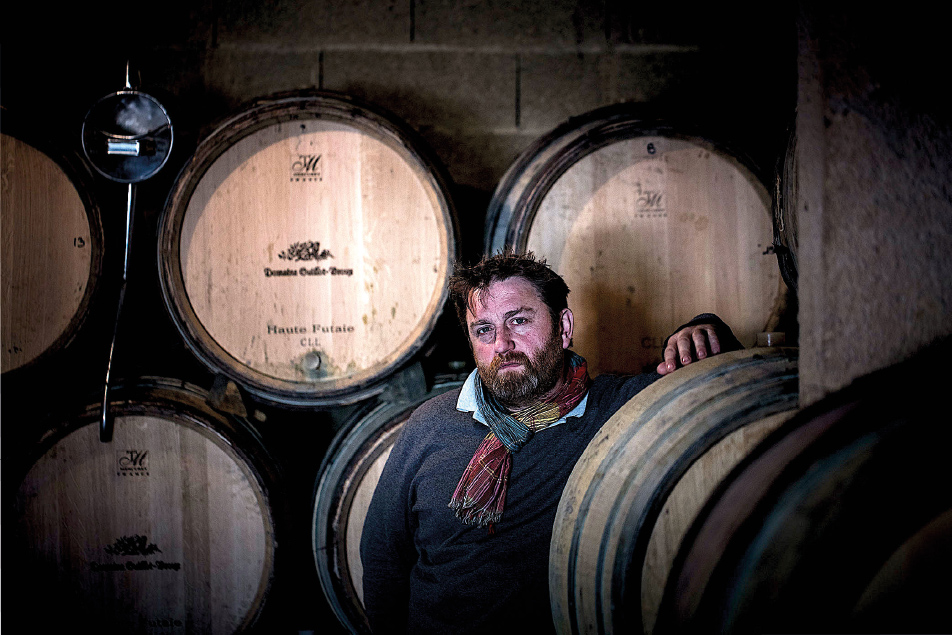Emmanuel Guillot considers the quintessence of wines through the prism of sommellerie, vineyards and comics. Inspired by his family's winegrowing history, he shares an intimate view of the Bourgogne region.

His grandparents were pioneers in organic viticulture as early as 1954, and in 1978 his father created the Guillot-Broux estate in Cruzille, which is oriented towards biodynamic viticulture with a pure awareness of the land. The palpitations linked to the vines led the prodigy son to work as a sommelier. He was introduced to the domain and then by Bruno Quenioux at Lafayette Gourmet, and since 1993 he has been using his perceptive acuity in the wine trade. He went a little further afield, working at the Ortolan and the St James, Gordon Ramsay's den. He perfected his skills there.
The appeal of liquid substances with captivating and intriguing notes is what drives him. In 2000, his passion for the vine inspired him to return to his family's vineyard, where he dreams of the best. This contact with the terroir and this gradual but unavoidable impregnation inspired him to express himself in other ways. From a joke between friends was born a creative alliance, an exceptional triumvirate, between professionals and wine lovers. His companions Hervé Richez, co-writer, and Boris Guilloteau, the illustrator, take part in the adventure. It began in 2014 with the publication of Un Grand Bourgogne Oublié. It will continue in 2017 with a second volume, Un Grand Bourgogne Oublié, Quand viennent les cicadelles ... In January 2022, the collection was expanded with a third album, Un Grand Bourgogne Oublié, Douze Bouteilles à la Mer. Emmanuel Guillot portrays himself as a winegrower, attentive to the needs of the estate, from the vines to the wine estimate. He reveals through the prism of his personal daily life the priorities of many colleagues, Burgundian and others. Acquiring new plots of land, making wine, the impact of prescribers, the Brexit, and the surge in auctions are all glimpsed through the lens of his personal life. Specific sections encourage the reader to consider the typical characteristics of winegrowing.The harvest, from picking to crushing, the vine's cryptogamic diseases and harmful insects are described in a didactic dynamic. With relish, the referents of winegrowing Bourgogne become actors, Bruno Clavelier, Jean-Louis Trapet, Cécile Tremblay and a few others are invited into the saraband where the plot captures the attention. Through a refined graphic design, a quest can be glimpsed, that of the iconic vintage. Just like the Grail, it captures the attention. The Bourgogne 1959 of the first volume, without any real label, leaving a doubt on its origins, encourages investigations. Searching through the organoleptic prism for the winemaker and the estate where it was born becomes a priority. The wine from the prodigious Jura in volume 2 will intrigue by its vinification, though which? Could the 12 bottles of Madeira 1792 have belonged to Napoleon Bonaparte, the Emperor who was attentive to Gevrey Chambertin? Each bubble tickles the curiosity, the humour, the infatuation for exceptional juices, those which twist your soul. The graphics are in black and white, but are adorned with colour when describing a fascinating liquid.
A series to be followed in delight, with attentive taste buds!
Sofia Lafaye
